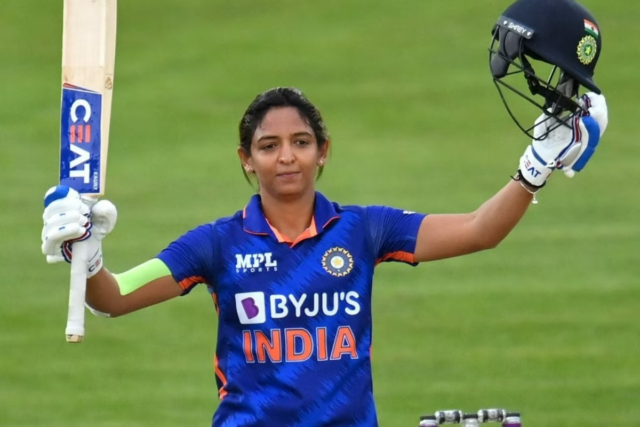The world of cricket is constantly evolving, and in recent times, women’s cricket has witnessed remarkable progress and recognition. One such significant development has been the call for more test matches in women’s cricket, and leading this charge is the dynamic Indian cricketer, Harmanpreet Kaur. Her expressed desire for more test matches has ignited discussions and rekindled the importance of longer formats in women’s cricket. In this article, we delve into the significance of Harmanpreet Kaur’s call, its potential impact, and the overall growth of women’s cricket.
A Champion on and off the Field: Harmanpreet Kaur
Harmanpreet Kaur, the vice-captain of the Indian women’s cricket team, is a name synonymous with excellence and determination. From her explosive batting to her exemplary leadership skills, Kaur has consistently pushed boundaries and paved the way for aspiring cricketers. Her contribution to India’s cricketing journey, including her memorable innings in the 2017 ICC Women’s World Cup, has earned her admiration and respect worldwide.
The Significance of Test Matches in Women’s Cricket
Test cricket is often considered the purest form of the game, testing a player’s skill, technique, and temperament over an extended period. While the women’s game has predominantly focused on shorter formats, the importance of test matches cannot be overlooked. Test matches provide players with a unique opportunity to showcase their endurance, strategy, and adaptability. They also offer fans a chance to witness the mental and emotional aspects of the game.
Harmanpreet Kaur’s Call for More Tests: The Catalyst for Change
Harmanpreet Kaur’s public expression of her desire for more test matches in women’s cricket has sparked conversations about the need to expand the scope of the game. Her call is not just about playing more tests; it’s about acknowledging the evolution of women’s cricket and providing players with a platform to excel in all formats. Kaur’s stance echoes the sentiments of many players who yearn to don the white jersey and participate in the longer version of the game.
The Potential Impact on Women’s Cricket
Harmanpreet Kaur’s call for more tests has the potential to reshape the landscape of women’s cricket. More test matches would mean a greater emphasis on skill development, mental strength, and strategic planning. It could also lead to the emergence of new talents who thrive in the longer format. Additionally, the inclusion of more test matches would create a sense of balance in the cricketing calendar, allowing players to showcase their abilities across formats.
Advocating for Equality and Growth
Harmanpreet Kaur’s call for more test matches aligns with the broader movement towards gender equality in sports. It emphasizes that women’s cricket should receive the same opportunities and recognition as men’s cricket. The growth of women’s cricket is not just about numbers; it’s about providing players with the chance to explore their potential and inspire future generations.
Frequently Asked Questions
Q: Who is Harmanpreet Kaur?
A: Harmanpreet Kaur is a prominent Indian cricketer and vice-captain of the Indian women’s cricket team, known for her dynamic batting and leadership skills.
Q: Why are test matches important in cricket?
A: Test matches are considered the purest form of cricket, testing players’ skills, technique, and endurance over an extended period.
Q: What is the significance of Harmanpreet Kaur’s call for more tests?
A: Harmanpreet Kaur’s call highlights the need for more test matches in women’s cricket, providing players with a platform to excel and showcasing the evolution of the game.
Q: How can more test matches impact women’s cricket?
A: More test matches can lead to skill development, strategic planning, and the emergence of new talents in women’s cricket, contributing to the growth of the sport.
Q: What does Harmanpreet Kaur’s call for more tests represent?
A: Harmanpreet Kaur’s call advocates for gender equality in sports and emphasizes the importance of providing equal opportunities and recognition to women’s cricket.
In conclusion, Harmanpreet Kaur’s call for more test matches is a significant step forward for women’s cricket. Her advocacy for longer formats highlights the evolution and potential of the women’s game. As the cricketing world embraces change, the inclusion of more test matches could pave the way for a balanced and thriving landscape, empowering players to showcase their skills and inspire future generations.
